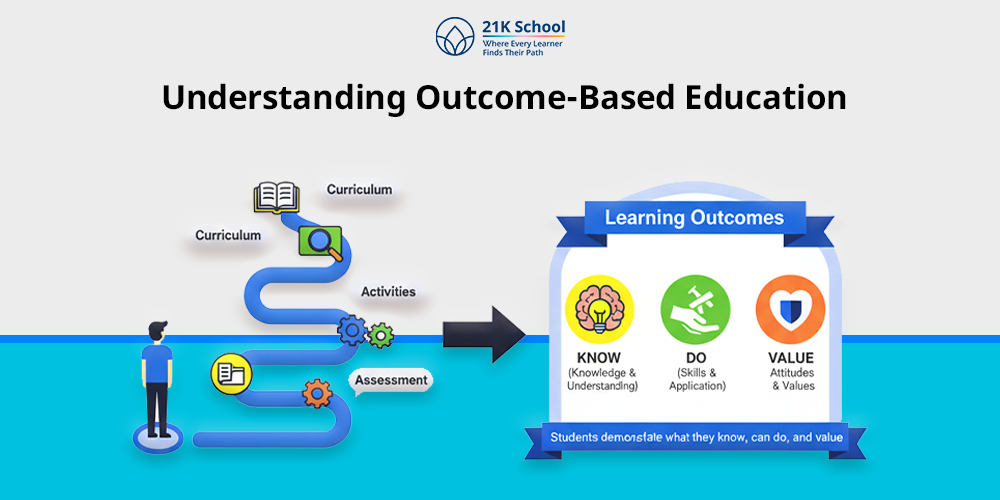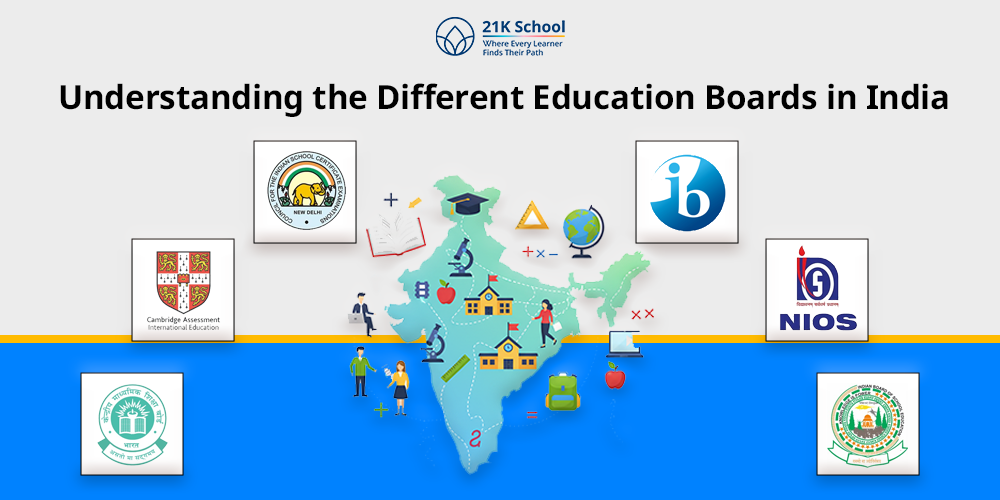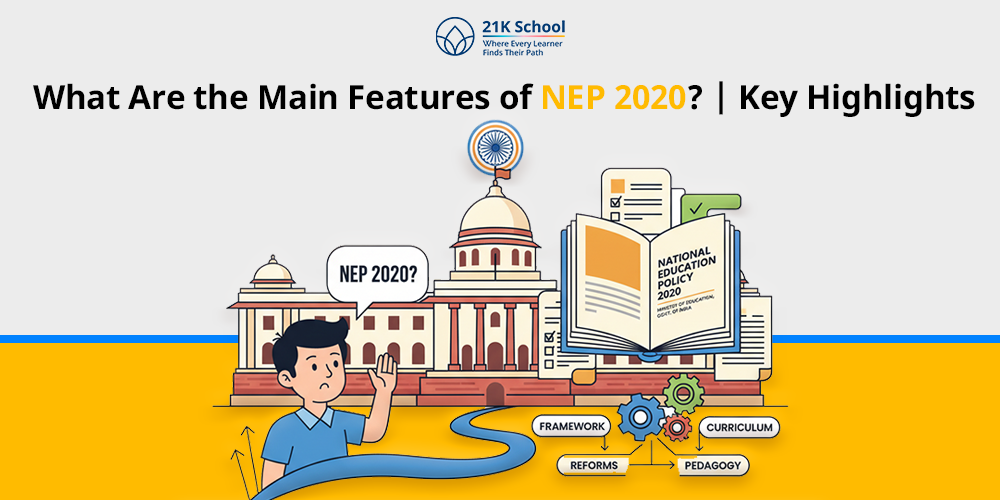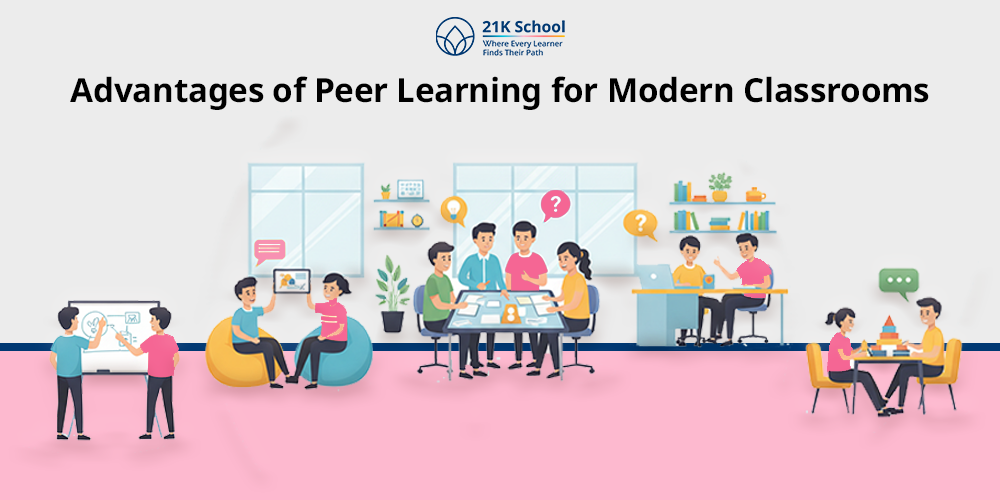
Have you heard why outcome-based education is becoming popular?
OBE focuses on attaining certain, quantifiable results or competencies, unlike the old systems of education, which focus on its teaching process and content delivery.
It serves to make sure that all the students reach some degree of knowledge, skills and attitudes by setting clear learning objectives prior to starting instruction. Curriculum, teaching methods and assessments in OBE are all geared towards the desired outcomes and hence learning is more student-focused and goal-oriented.
This system promotes active engagement, lifelong learning and responsibility both in teaching and learning. OBE is also consistent with the objectives of the National Education Policy (NEP) 2020 , which is focused on competency-based education , critical thinking , innovation, and learning based on holistic education .
Contents
What is Outcome-Based Education?
Outcome-Based Education (OBE) is a method of education where the results or outcomes of the learning process, what the students are expected to know, do, and value upon completion of their studies, is considered as the main aim of the educational process.
Rather than focusing on what teachers teach, OBE focuses on what students know and their ability to apply their knowledge in real-life settings. At the culmination of the learning process, every learner must have reached the target.
It is a student-centred learning approach, and it establishes clear and measurable learning outcomes in each course or programme. Based on these outcomes, all teaching strategies, learning activities and assessments are then tailored to assist the students to attain these outcomes.
OBE encourages the ongoing enhancement, since, through assessment, feedback is utilised to enhance teaching methods and curriculum development. Education systems the world over have embraced outcome-based practices at various levels.
Features of Outcome-Based Education
The characteristics of the outcome-based education illustrate learning outcomes that are attained at the end of each lesson. It is more concerned with what students are supposed to know, can do and display at the completion of their learning and not simply what they get taught. The characteristics of outcome-based education are indicated below.
1. Flexible Curriculum
In outcome-based learning, the curriculum is not strictly determined to particular subjects and instructional strategies. Rather, it is structured around clearly stated learning outcomes-what students are expected to be able to do upon completion of a programme or course.
Such flexibility gives teachers an opportunity to select the most effective teaching methods, learning tasks and assessment materials that will best assist students in attaining those results.
2. Emphasis on Real-world Skills
OBE is aimed at training skills and competencies which can be implemented in real-life situations by students. Instead of rote learning , the students learn to apply knowledge in solving problems , critical thinking, communication, and group working.
The end goal is to equip the learners to handle the real-world challenges in their careers and communities and make education count outside of the classroom.
3. Student-Centered
One of the largest changes is the fact that OBE puts the learner at the centre of the learning method . Students take an active part in their learning process, and not merely receivers of information.
They are motivated to assume responsibility for their improvement, practise self-evaluation, as well as, acquire autonomous learning capabilities. Educators become facilitators and mentors who guide, support, and provide opportunities to students in order to attain the desired results.
4. Continuous Improvement
OBE is premised on the concept of continuing improvement of teaching and learning. Students, assessments and performance evaluation are used as a source to identify improvement areas.
Curricula, teaching methods and outcome achievements are routinely checked by institutions to make sure that they are effective and relevant. This continuous process makes education dynamic and responsive to the changing needs and standards.
5. Accountability
In OBE, all the stakeholders in the learning process have a responsibility of making the desired results a reality. Students have a role in demonstrating their learning, teachers have a role in creating a positive learning environment , and the institutions have a role in offering a welcoming environment.
Such accountability will foster transparency and quality of education provision and measurement.
6. Assessment-driven
Evaluation is a key factor in OBE. It is directly correlated with the learning outcomes and is oriented on assessing the ability of the students to exhibit the required knowledge, skills and attitudes.
Instead of the conventional exams, OBE incorporates multiple forms of assessments- projects, portfolios, real-life tasks, and presentations measure actual knowledge and skills of learning implementation.
6 Benefits of Outcome-Based Education
The benefits of outcome-based education are enormous to the students and enable them to develop critical thinking and problem-solving skills , personalised learning , etc. OBE makes education more relevant as it considers real-world skills. Outcome-based education has the following advantages.
1. Student Centred Learning
Outcome-Based Education (OBE) is a student-centred model of learning based on the premise that a student is the centre of the whole learning process. It does not focus on what teachers tell but on what students learn and demonstrate.
This method stimulates the students to be more active in the process of studying, which fosters independent thinking, self-evaluation and responsibility in learning.
2. Improves Accountability
OBE sets clear expectations to both learners and teachers because it provides quantifiable learning outcomes. The teachers have the responsibility of ensuring that the lessons, activities, and evaluations they create are effective in assisting students to attain those results.
Students on the other hand, are expected to show mastery of the required skills and knowledge. This accountability system fosters an organisational culture that is results-oriented, in which all people collaborate to deliver clear and meaningful objectives.
3. Continuous Improvement
The instruction-learning process is routinely assessed in order to assess the performance of the students in relation to the expected results. Using such assessments, educators and schools are able to manage the gaps, implement the required changes, and improve the quality of education.
The process will make education dynamic, relevant and responsive to the needs of the students and the industry. There is a continuous improvement that is beneficial not only to the student but also to the overall effectiveness of the educational system.
4. Develops Problem-Solving Skills
OBE will also assist students to use their knowledge and skills in actual life scenarios so that they can develop practical skills of solving problems. This learning experience builds them up to approach the actual real-life situations with confidence and competence.
Problem-solving strategies enable students to examine complex issues and find innovative solutions to the same. This leads to the graduates being more competent, versatile and employable and with good analytical and decision-making skills that are useful in any given career.
5. Promotes Personalised Learning
Personalised learning is one of the biggest advantages of outcome-based education, which offers students to study according to their own needs and interests. This individual learning model assists in accommodating different learning styles , capabilities, and backgrounds so that all students can even have an equal chance to achieve.
This will enable the learners to move at their own speed and employ various methods to achieve the same things. It motivates self-directed learning and builds confidence and motivation in students .
6. Develops Critical Thinking Skills
OBE goes beyond memorisation and promotes high-order thinking among students. It is concerned with building skills in terms of analysis, evaluation, reasoning and creativity.
This form of learning does not just equip them with a successful academic performance, but also a lifetime of learning. OBE will enable the students to be more independent, creative and competent by developing critical thinking skills , which will make them valuable members of society.
6 Disadvantages of Outcome-Based Education
Undoubtedly, outcome-based education is very helpful to students as they can study without any obstacles. Nevertheless, OBE is hard to implement for a great number of students and even teachers.
This is primarily due to the fact that it is long; some of them are accustomed to the old-fashioned approach, unequal results and so forth. The drawbacks of outcome-based education are the following.
1. Resistance to Change
Outcome-based education has not gone without controversy; it is usually opposed by teachers, students, and institutions that have been used to the traditional schooling systems. The application of OBE involves a total change in the teaching strategy, assessment plans, and curriculum design.
The teachers should be trained on how to structure the learning outcomes and how to measure them. Students can also not adjust well to new learning requirements that aim at attaining particular outcomes as opposed to the usual exams.
2. Unequal Outcomes
In spite of the fact that OBE is supposed to make sure that every student attains some competencies, it may, in reality, draw inequalities. Others might achieve the required results without difficulties, and others might fail in spite of their struggle.
This has the potential of creating a disparity between the high and low performance students, undermining the principle of fairness and inclusivity in education . Thus, OBE may contribute to the elimination of educational inequality unintentionally.
3. Reduce Depth Knowledge
The centre of interest in OBE is largely on measurable outcomes or competencies. This may result in the over-stressing of the attainment of given capabilities or goals instead of promoting an in-depth appreciation of the topic.
Students may concentrate on the learning of what is required to achieve the results and not the larger or more sophisticated ideas. Consequently, exploration and conceptual richness may be compromised in favour of achieving the performance objectives.
4. Hampers Learning Efficiency
Development and deployment of OBE takes a lot of planning, documentation and constant evaluation. Teachers must create lesson plans, rubrics, and assessment instruments that are based on outcomes, which may be tedious and daunting.
The outcome-focused approach to teaching, learning, and assessment can decrease the flexibility of teaching and slow down the learning process. Rather than accomplishing any meaningful learning with the students, teachers might waste a lot of time in administrative work and forms.
5. Time Consuming
OBE requires continuous monitoring, evaluation, and feedback in order to make sure that students attain the desired results. The teachers are supposed to monitor the progress of every learner frequently and adjust them to achieve the expected standards.
This process of ongoing evaluation takes both teachers and students a long time and effort. This is a continuous evaluation process that is time-consuming and cumbersome for teachers and students. This results in less time to address new subjects, discussions in the classroom learning and creative work.
6. Hampers Creative Thinking Skills
OBE sometimes hampers creative thinking skills ; however, it promotes critical thinking skills and independent thinking because it is strongly concerned with attaining predetermined results. Students tend to be steered to achieve a certain set of standards leaving them no time to explore, innovate, or even think outside of the box.
Educators may also put more emphasis on quantitative competencies as opposed to challenging the students to question, analyse and develop new concepts. In the long run, this may impair the thinking capability of the students and inhibit the cultivation of creative problem-solving techniques .
Difference Between Outcome-Based Education and Traditional Education
Outcome-based education and traditional education are associated with the teaching and learning process. Traditional education entails passing the knowledge between a teacher and a student.
Conversely, OBE is a student-oriented model that makes lesson planning and curriculum delivery focus on clearly specified learning outcomes. The difference between outcome-based education and traditional education are listed below.
| Aspects | Outcome-based education | Traditional education |
| Flexibility | Outcome-based education is highly flexible and offers flexibility in learning to students. | Traditional education is rigid and doesn’t provide much flexibility as compared to outcome-based education. |
| Personalisation | Outcome-based education provides personalised learning to students, allowing them to study as per their own learning style. | Traditional education is rigid and doesn’t provide much personalised learning experience to students. |
| Memorisation | Outcome-based education focuses on practical knowledge, enabling students to gain experiential learning . | Traditional education focuses on rote learning methods, allowing students to memorise theoretical knowledge. |
| Methodology | Outcome-based education has a student-centred methodology, providing students with autonomy. | Traditional education is teacher-centred, in which, teacher teaches and the student listens. |
| Assessment Method | The assessment method of outcome-based education includes both summative assessment and formative assessment with flexibility; however, it doesn’t eliminate traditional education. | The assessment method of traditional education is based on exams and projects. |
Conclusion
Outcome-Based Education (OBE) is a drastic change of conventional education because of the emphasis on what students can and not what is taught by teachers.
It focuses on student-centred learning, continuous improvement and measurable results, which makes education more relevant, practical and in line with needs of the real world.
Despite the difficulties that OBE poses in terms of refusing to change and an extra workload, its advantages, including encouragement of critical thinking, problem-solving and personalised learning, make it an effective strategy in the contemporary educational process. Altogether, OBE promotes a more efficient, responsible, and comprehensive educational process in learners.



